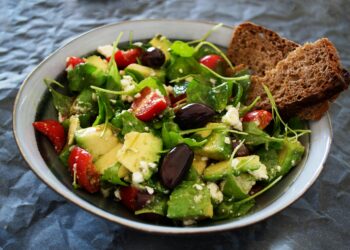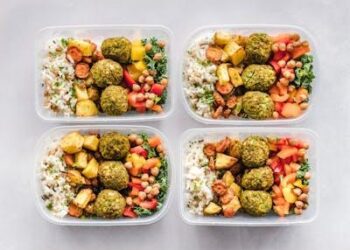High-volume, low-calorie foods provide a lot of food without containing too many calories. They often contain water, fiber, and minerals. The wonderful thing about these foods is that they genuinely satiate hunger while adding very few calories to your diet.
Furthermore, the nature of these foods makes them suitable for persons who are trying to control their weight or keep track of how many calories they consume. In this post, we’ll look at high-volume, low-calorie foods and how they can aid with weight management.

How They Work
One of the hallmarks of high-volume, low-calorie foods is that they satisfy individuals without requiring them to consume a great deal of calories. When you consume a high volume, low calorie meal, such as a large salad with plenty of vegetables, you will feel full because of the water and fiber content in the entire meal. When these foods are consumed, they expand in your stomach, signaling to your brain that you are full.
Furthermore, fiber reduces the rate at which your stomach empties and sugar is absorbed into your system. This means you stay fuller for longer and don’t experience those bothersome hunger sensations right after eating. Basically, it feels like your food stays with you throughout the day.
For example, a large bowl of mixed greens with colorful vegetables may contain fewer calories than a modest amount of a calorie-dense food such as fried chicken. As a result, you can eat nutritious foods without overindulging in calories, which is especially useful if you’re attempting to lose weight. Finally, these foods are rich in vital components such as vitamins and minerals, which aid in optimal bodily function.
Benefits for Weight Management
Feel Full with Fewer Calories: These foods make you feel full faster and keep you full for longer because they’re packed with water and fiber. This means you end up eating fewer calories overall, which is great for controlling your weight.
Less Snacking: Because these foods keep you full, you’re less likely to get hungry between meals. This helps reduce cravings and the urge to snack on unhealthy foods.
Weight Loss: Eating these foods can help you create a calorie deficit, which means you eat fewer calories than your body needs to maintain your weight. When this happens, your body starts using stored fat for energy, leading to weight loss over time.
Examples of High-Volume, Low-Calorie Foods
- Vegetables: Spinach, kale, carrot, celery
- Fruits: Berries, apples, oranges, and watermelon
- Broth-based soups
- Lean protein sources: Chicken breast, fish, Beans, lentils, and chickpeas
- Air-popped popcorn
Conclusion
When making meal plans, keep a few things in mind. First and foremost, not all low-calorie foods will satisfy your hunger.
For example, dried fruit might be low in calories, but it is also small which means you can consume a lot without feeling full. Second, make sure you incorporate healthy fats and proteins. Avocados and nuts provide healthy fats, which are beneficial to the brain and hormones.
Proteins in foods such as meat, fish, eggs, and beans aid in muscle regeneration, and help repair your muscles and keep you strong.
Finally, try to eat a balanced diet. High-volume, low-calorie foods are excellent for weight management, but they should be part of a well-rounded meal plan.
Eating a variety of foods ensures that you get all of the nutrients you need, keeps your energy levels up, and promotes your health.

















